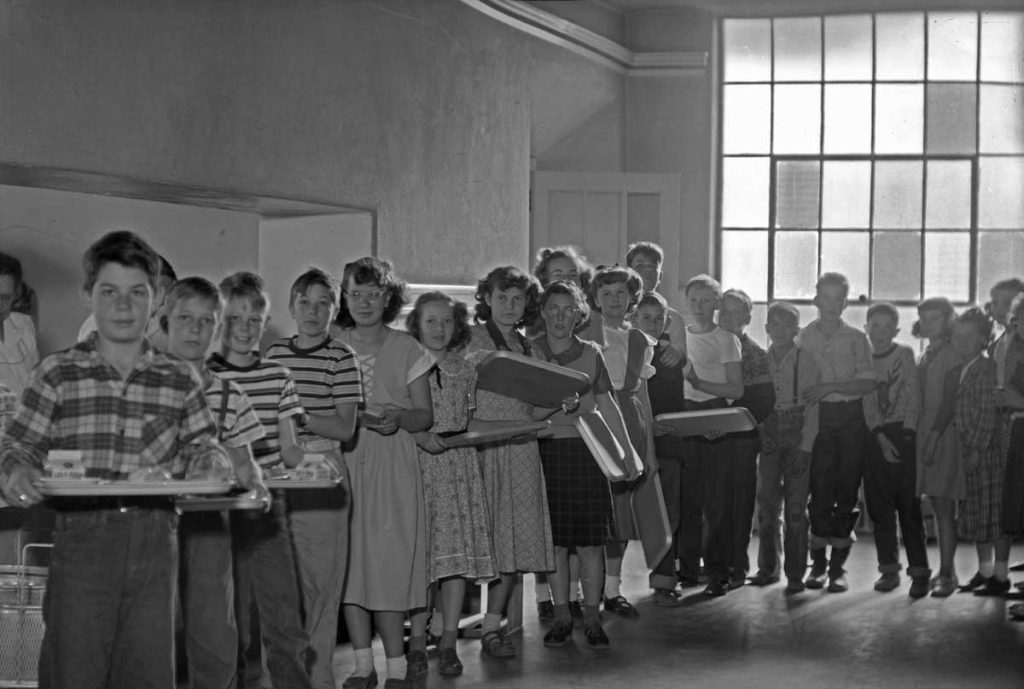For many adults, Thanksgiving has a way of sneaking up on us. We know it’s coming, we know it occurs on the fourth Thursday in November. Yet are we prepared for what it signals? Perhaps we procrastinate for good reason. It triggers thoughts on “where did the year go?” While we ponder time’s passage, there is no question about the next few weeks – they will pass in a blur.
For children not yet burdened with life’s experiences, the arrival of Thanksgiving confirms that their favorite time of the year is near. Unlike their parents, they can’t wait for the arrival of the Holidays. This article explores Thanksgiving memories from Park City in the 1950s.
For Steve Leatham, a fourth generation Parkite, the Tuesday before Thanksgiving was the only day during the year that he ate lunch at school. Except for this special day, Steve would walk home for lunch (it took him less than ten minutes). However, the lure of a home cooked meal was no match for the Thanksgiving program and feast provided by the Marsac School.
Lunch was a traditional Thanksgiving dinner. The school’s chefs – Esther Anderson, Lillian Bircumshaw, Vera Tree and Lily Wheeler – prepared a meal to remember. They appreciated that for some of the students, this luncheon would in fact be their Thanksgiving meal. During the 1950s the town’s financial situation was dire at best. Most of the mines were closed. More miners were unemployed than worked. The school and their cooks did the best they could to ameliorate this reality.
Besides lunch, teachers and students hosted a program honoring Native Americans who helped ensure that the Pilgrims would survive their first year in Plymouth Colony (at least half of them anyway). Colored paper was fashioned to resemble Indian headbands including feathers. Students marched throughout the building chanting interpretations of Indian songs. For Steve and his Marsac classmates, these Thanksgiving festivities meant that Christmas was near at hand, whether their parents were ready or not.

Credit: Park City Historical Society & Museum, Kendall Webb Collection
For the Flinders family, the Thanksgiving “season” was exceptionally hectic. They operated a 900-acre ranch in the Snyderville/Kimball Junction area. Since their purchase of the ranch in 1949 the family patriarchs, Judd and Beth, and their five children cultivated multiple businesses on their property. One of them was fall hayrides.
The ranch was a popular destination for corporate and/or church events, primarily from Salt Lake City. Regarding the hayrides, the family operated two wagons each with a capacity of 25 people. The rides ran Tuesday, Friday and Saturday evenings with a five dollar per-person fee. This included the hayride (one hour round trip), an all-you-can-eat chili dinner, fresh bread, and an ice cream parfait for dessert. Reservations were required, as every ride sold out. Special occasions were accepted (by appointment only) except for Sunday.
Thanksgiving Day offered a brief respite from the demands of running their diverse activities. Except for tending to the livestock, the family would enjoy a quiet day at home cherishing one another’s company. Reservations were booked through New Year’s weekend. The family was grateful. It was indeed a day of giving thanks.
Happy Thanksgiving next week from the Park City Museum! The Museum will be closed on Thanksgiving Day, but will be back open for Black Friday.
The author extends his appreciation to Jim Hewitson, Leland Flinders, his surviving siblings (Melvin, Jerran and Elizabeth), Steve Leatham, Marian McGuire and Scott Smith for sharing their memories of Thanksgiving in Park City.